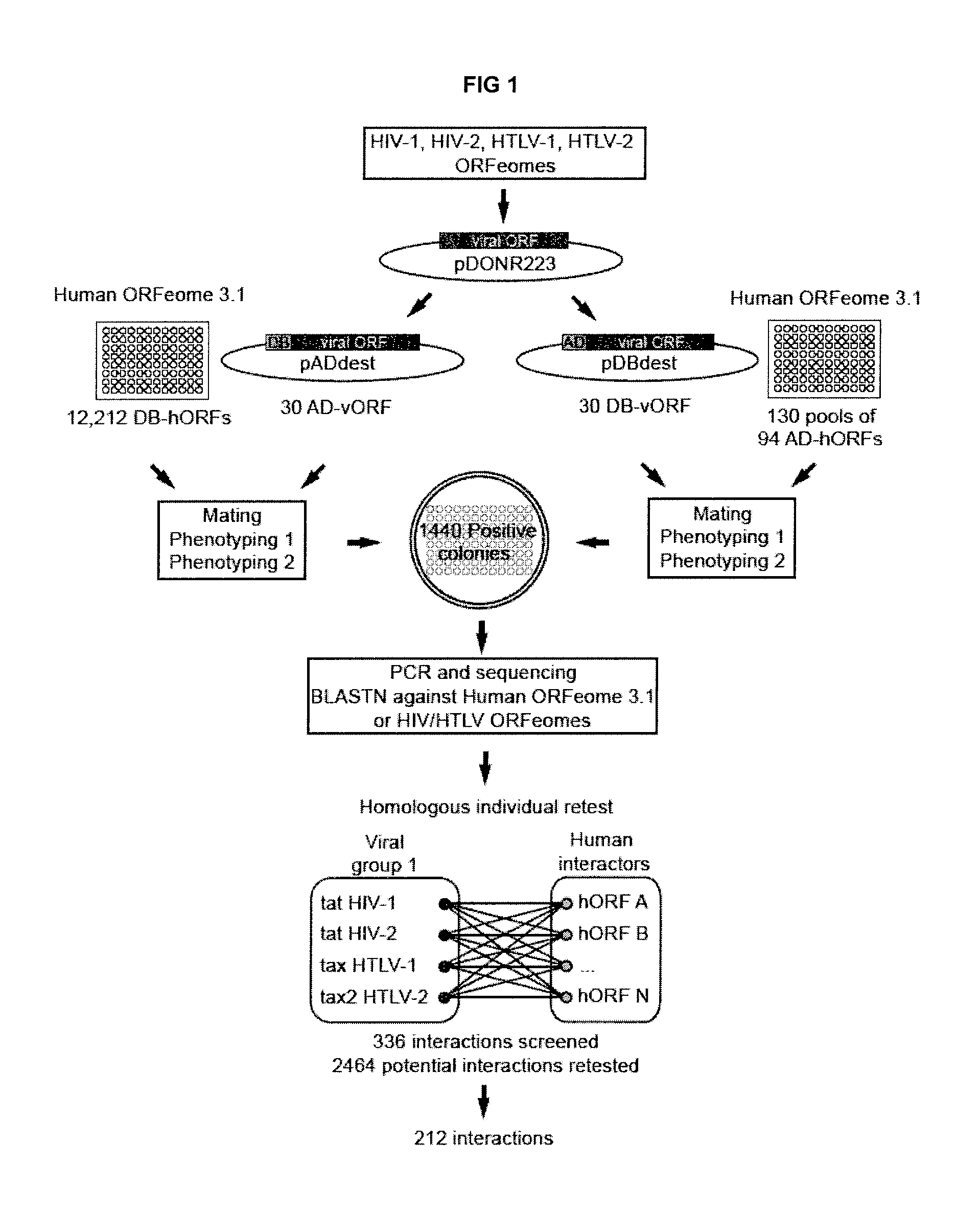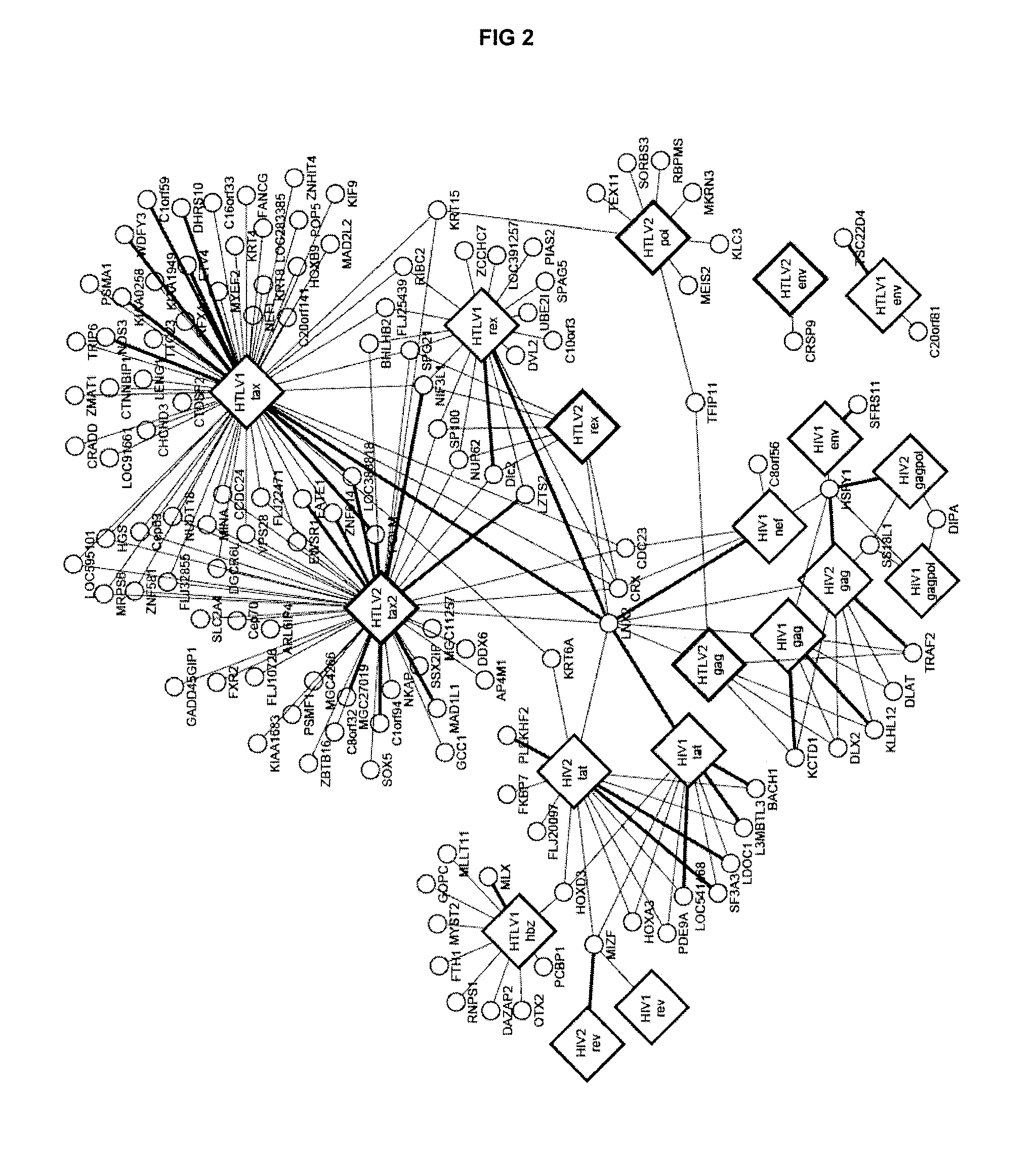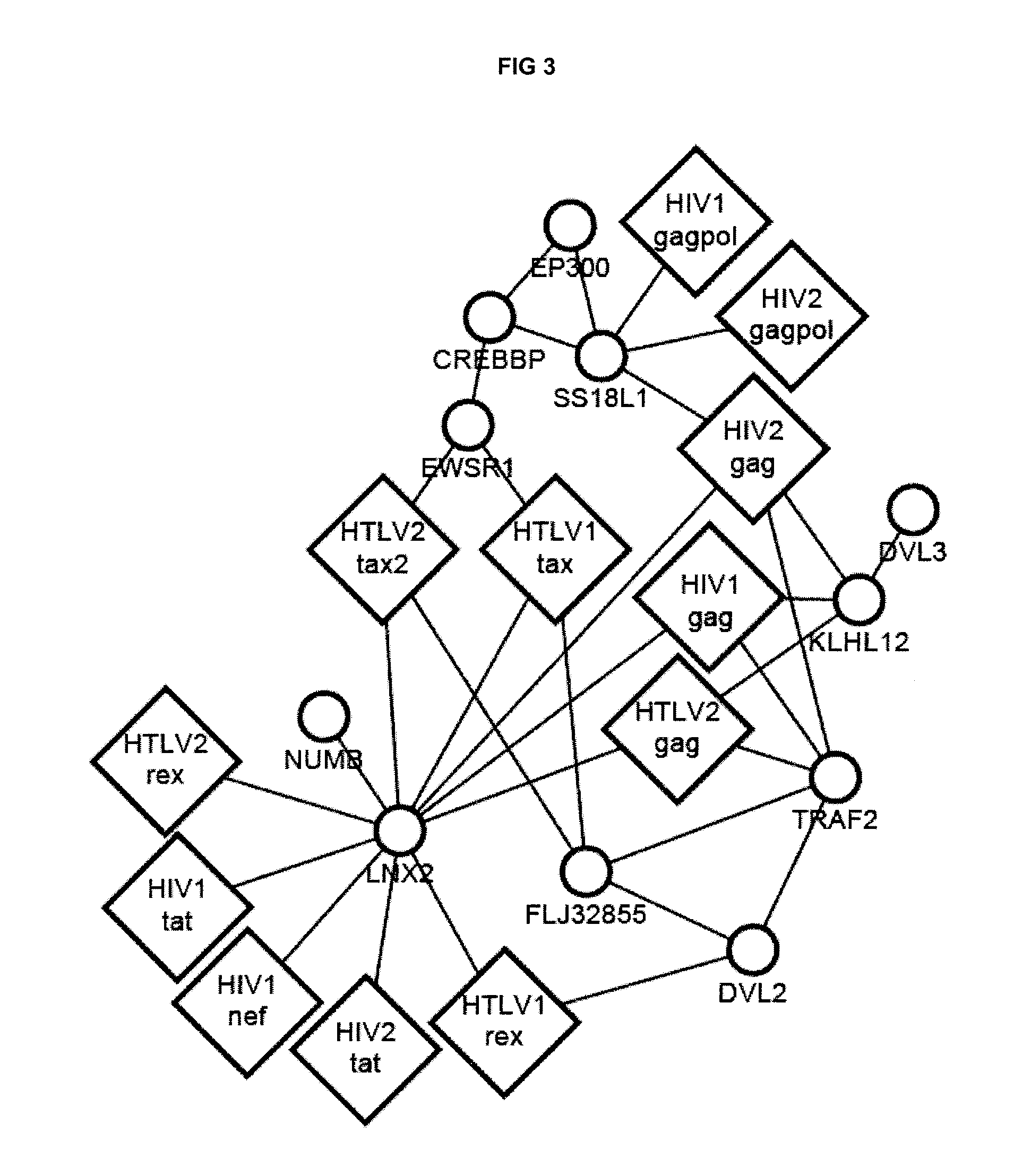Targets for retrovirus associated diseases
- Summary
- Abstract
- Description
- Claims
- Application Information
AI Technical Summary
Benefits of technology
Problems solved by technology
Method used
Image
Examples
example 1
Cloning of HIV-1, HIV-2, HTLV-1 and HTLV-2 ORFeomes
[0207]To clone HIV-1 and HIV-2 ORFs we used as PCR templates, the following DNA obtained through the AIDS Research and Reference Reagent Program, Division of AIDS, NIAID, NIH: pNL4-3 (Adachi et al. 1986. J Virol 59: 284-291); pCMV-rev (Lewis et al. 1990. J Virol 64: 1690-1697); pcDNA-Vphu and pcDNA-HVif (Nguyen et al. 2004. Virology 319: 163-175); Senegalese HIV-2 isolate (HIV-2 / ST) (Kong et al. 1988. Science 240: 1525-1529); the 96ZM651.8 clone (Gao et al. 2003. AIDS Res Hum Retroviruses 19: 817-823); GST-Tat1 and GST-Tat2 (Rhim et al. 1994. J Acquir Immune Defic Syndr 7: 1116-1121).
[0208]To clone HTLV-1 and HTLV-2 ORFs, DNA clones MT-2 (Gray et al. 1990. Virology 177: 391-395), ATK (Seiki et al. 1983. Proc Natl Acad Sci USA 80: 3618-3622), pH6 B 3.5 and pH6 B 5.0 Chen et al. 1983. Nature 305: 502-505; Shimotohno et al. 1984. Proc Natl Acad Sci USA 81: 6657-6661) and pcDNA-SP1 (Cavanagh et al. 2006. Retrovirology 3: 15) were used a...
example 2
LR Cloning into Yeast Two Hybrid and Mammalian Destination Expression Vectors
[0209]All full length and partial retroviral ORFs (rvORFs) were transferred by LR cloning into pDB-dest and pAD-dest-CYH (Vidalain et al. 2004. Methods 32: 363-370) to generate yeast expression vectors for DB-rvORF and AD-rvORF fusion proteins. For downstream functional assays, the human ORFs identified in yeast two-hybrid experiments were also subcloned from their corresponding entry clones into pDEST-Flag vectors.
example 3
High-Throughput Yeast Two-Hybrid
[0210]AD-rvORF and DB-rvORF yeast expressing vectors were respectively transformed into MATa and MATα cells of two different yeast strains Mav103 / 203 and Y8800 / 8930. Transformed yeast cells were then spotted on solid synthetic complete (Sc) media lacking tryptophane (Sc-T) to select for AD-rvORF clones or leucine (Sc-L) for yeast containing DB-rvORF vectors. Growing colonies were cultured in liquid Sc-L or Sc-T media and stored in glycerol for subsequent use. All DB-ORFs in Mav103 strain or Y8930 were individually tested for auto-activation by growth on solid SC-L-H medium containing 20 mM (Mav103 strain) or 2 mM (Y8930 strain) of 3-amino-triazole (3-AT) to eliminate autoactivators baits that are able to activate reporter genes in the absence of AD plasmids. Aliquots of AD-rvORF transformed yeast were pooled to generate the AD-rvORF library.
[0211]Yeast two-hybrid screening was then performed as previously described (Rual et al. 2005. Nature 437: 1173-...
PUM
| Property | Measurement | Unit |
|---|---|---|
| Time | aaaaa | aaaaa |
| Time | aaaaa | aaaaa |
| Time | aaaaa | aaaaa |
Abstract
Description
Claims
Application Information
 Login to View More
Login to View More - R&D
- Intellectual Property
- Life Sciences
- Materials
- Tech Scout
- Unparalleled Data Quality
- Higher Quality Content
- 60% Fewer Hallucinations
Browse by: Latest US Patents, China's latest patents, Technical Efficacy Thesaurus, Application Domain, Technology Topic, Popular Technical Reports.
© 2025 PatSnap. All rights reserved.Legal|Privacy policy|Modern Slavery Act Transparency Statement|Sitemap|About US| Contact US: help@patsnap.com



